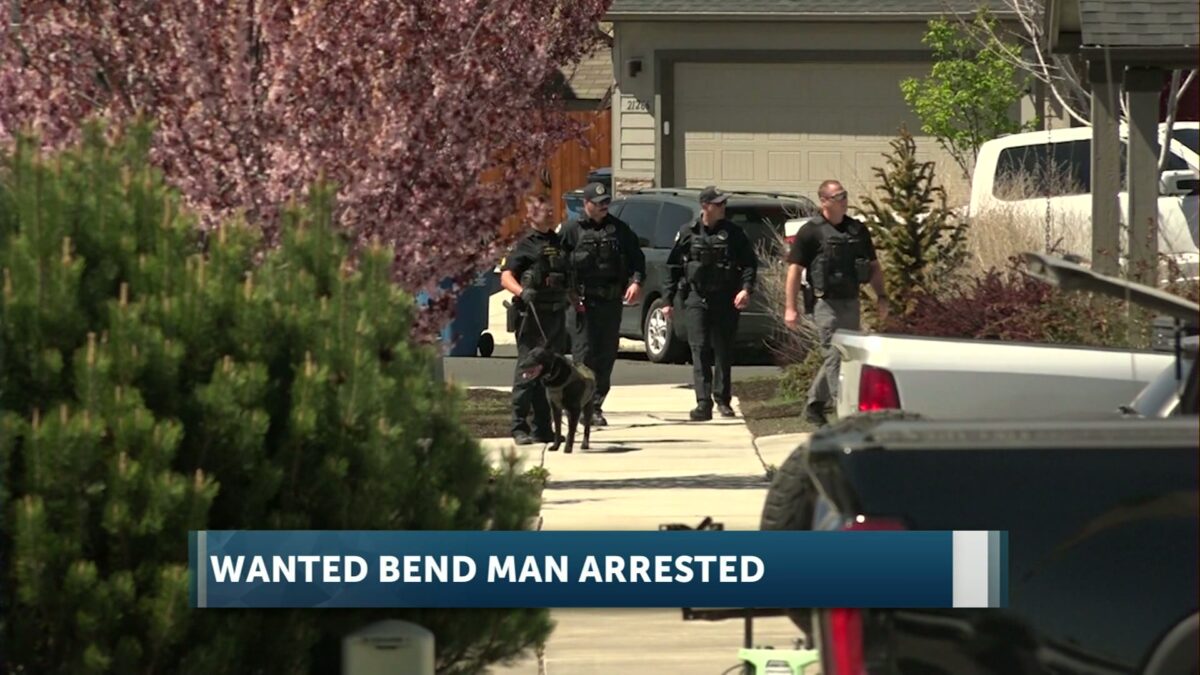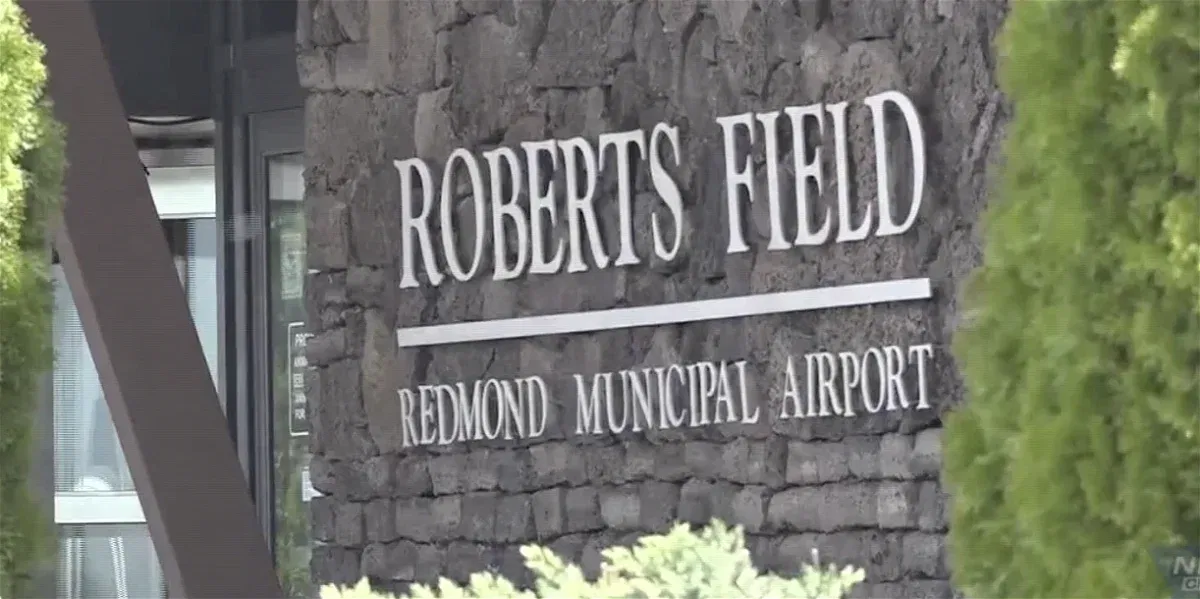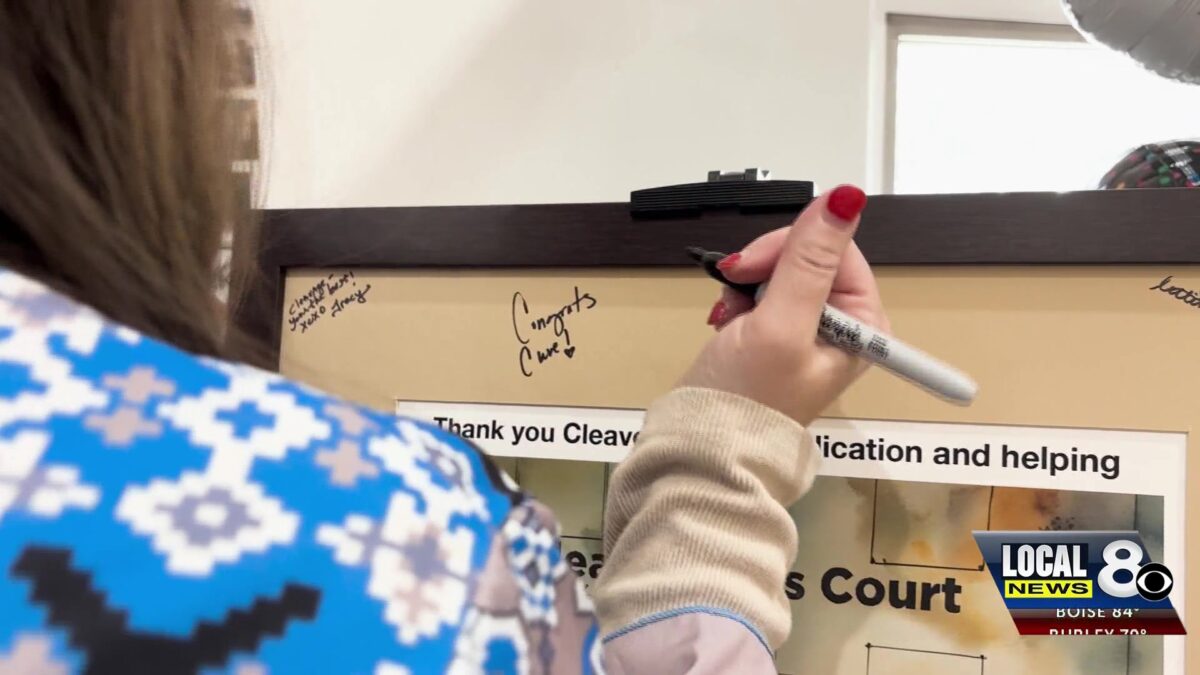Mitchell Kaminski
COLUMBIA, Mo. (KMIZ)
Dozens of protestors crashed an event hosted by the Columbia Chamber of Commerce on Friday, which featured appearances from Missouri Republican lawmakers Rep. Bob Onder and Rep. Mark Alford.
The event, held at The Kitchen Grill and Games, was a closed-door meet-and-greet between representatives, local business leaders, and a U.S. Chamber of Commerce representative. The goal of the event was to hold an open forum to discuss issues important to local businesses.
Constituents Call for Accessibility
Both lawmakers took questions from the media outside. However, when Onder stepped outside to take questions, he was repeatedly interrupted by protesters shouting “liar.”
Allie Teagarden, who lives in Onder’s district, was one of the protestors who attended the event, holding a sign that read: “Why are you hiding from your constituents?”
“They don’t house public events in the state of Missouri and certainly not in Columbia,” Teagarden said. “I’m represented by Congressman Onder, but I had the opportunity to travel to Belton, Missouri earlier this winter when Congressman Alford was having a town hall at a coffee shop. And there were hundreds of us there, and he skirted out the back instead of having to face his constituents.”
Alford told CNN in February that some people at the Belton town hall were “outside agitators,” while also acknowledging some were his constituents. She called Alford’s claim “an excuse for not making themselves accessible to constituents.”
“It’s very frustrating. I could be working right now and actually making money. I wish I was being paid to be here today, and that is certainly not the case. I’m also a chamber member, so I own a small business here in town, run community events. So by being here and coming to these types of things and making calls to my congresspeople, I am losing money and income for my family. So, for them to allege that I’m being paid to do this is laughable,” Teagrden said.
Alford, Onder Defend the “Big Beautiful Bill”
When speaking with the media, Onder and Alford defended the “Big Beautiful Bill,” highlighting reforms to Medicaid, food stamps, and federal tax policy aimed at curbing waste and controlling the national debt.
Alford defended the bill, framing it as vital for small businesses and the economy.
“I think the left has demonized this, gaslit the American people, saying this is a tax cut for the rich. This is a tax continuation program for people in small businesses, 33 million small businesses in America,” Alford said. “If we don’t maintain the Tax Cuts and Jobs Act from 2017, it’s estimated that 6 million people will be out of a job. The average family in Missouri right now would see an increase of almost $2,000.”
Alford also highlighted the bill’s $1.6 trillion in savings and projected economic growth.
“That means added revenue coming into the Treasury. That means more growth for our economy. That means reducing our deficit,” Alford said.
The Trump administration has made a push to lower the national debt through the newly created Department of Government Efficiency. However, analysis indicates the “Big Beautiful Bill” will lead to spending increases and tax cuts that will significantly expand the deficit.
Onder said the key issue is how to handle the deficit as the 2017 Tax Cuts and Jobs Act nears expiration.
“The fundamental question in the Big Beautiful Bill is whether by letting the 2017 Tax Cuts and Jobs Act expire, whether we would be imposing a $4.5 trillion tax increase on the American people,” he said. “The question is whether we want to impose a 22% tax increase on the average American family. That’s about $1,600 for the average family of four. And at the same time, we’re cutting about $1.6 trillion with various reforms and cutting of waste, fraud and abuse. But there’s more to be done in terms of getting our budget situation under control.”
Potential Impact on SNAP and Medicaid
The bill, which aims to implement President Donald Trump’s policy agenda, is expected to undergo changes in the Senate. It faces opposition from advocates for low-income Americans, who warn of rising food insecurity.
Millions of low-income Americans could lose food assistance under House Republicans’ tax and spending cuts package, according to a recent Congressional Budget Office analysis.
The Center on Budget and Policy Priorities estimates that about 14,000 Missourians ages 55-64 with no children and no disability are at risk of losing food assistance under the proposed expansion of SNAP’s work requirement, according to an analysis of SNAP quality control data for the 2022 fiscal year.
However, Onder says that those who are eligible for the food stamp program will be “essentially unaffected.”
“This bill does require the states to have some skin in the game,” Onder said. “I think it’s a problem when federal programs are 100% federal, and then states just treat those as if it is free money. I think you’ll see better stewardship over those federal dollars when the states have skin in the game with the food stamp program.”
In 2023, SNAP provided aid to roughly 42 million Americans monthly, 12.6% of the U.S. population. The USDA says about 12.2% of Missouri households are food insecure.
Overall, 54,000 Missourians ages 18-64 with school-age children and no disability are at risk of losing food assistance under the proposed expansion of SNAP’s work requirement, according to CBPP’s analysis of SNAP quality control data for the 2022 fiscal year. However, Alford believes that while the program has been beneficial, the bill will help prevent people from taking advantage of the program.
“I’ve been a big proponent for people on the Supplemental Nutrition Assistance Program who truly should be there,” Alford said. “We have $33 million a day in waste, abuse and fraud in the SNAP program. The number two thing bought with SNAP right now is sugary drinks. Seven billion of taxpayer dollars is contributing to the promotion of obesity in America, which is putting further strain on Medicaid and Medicare. It’s a vicious circle. So we’ve got to make sure that these job training programs are in place for folks on SNAP.”
Onder and Alford also addressed how the bill will affect Medicare. The bill includes over $700 billion in changes to Medicaid, aiming to cut federal spending. These changes would affect both low-income recipients and the healthcare providers who care for them.
Onder, who practiced medicine for over 30 years, said the bill preserves Medicaid coverage while implementing crucial reforms.
“I can tell you there is a lot of waste, fraud and abuse in the Medicaid program,” Onder said. “But what the big beautiful bill did not do is cut Medicaid. It did really two major reforms, both of which I think are a good idea. One is to require regular eligibility checks to make sure that those who are on the rolls are actually eligible. And number two is reform work requirements, modest work requirements for able-bodied working-age adults. The traditional Medicaid is completely unaffected by the bill.”
Onder insisted the changes wouldn’t leave people uninsured.
“We’re just no longer sending a check to an insurance company for someone who doesn’t exist,” he said. “I think the overwhelming majority of those folks will get jobs. In the 1996 Welfare Reform Act, a study by the Brookings Institute showed 80% of folks got jobs with work requirements. And two years later, on average, family household income had doubled.”
Click here to follow the original article.













